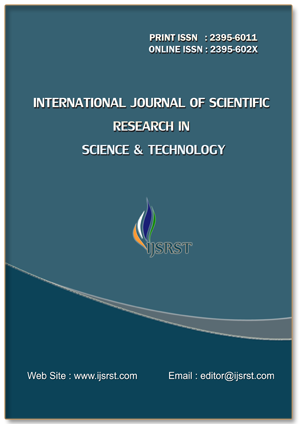Study of Losses in The Coupled Microstripline and Its Variations with Different Parameters
DOI:
https://doi.org/10.32628/IJSRST25121221Keywords:
MICs, Coupled Microstripline, Losses, StripwidthAbstract
In this paper, we discussed the study of losses in the coupled microstripline and its variations with different parameters. With the help of these results design synthesis technique is used to obtain the geometrical parameters of a coupler of given parameters.
Downloads
References
T. E. van Deventer, L. P. B. Katehi, and A. C. Cangellaris, “Analysis of conductor losses in high-speed interconnects,” IEEE Trans. Microwave Theory Tech., vol. 42, pp. 78-83, Jan. 1994.
C.M.Krowne, “Microstrip conductor losses calculated by full wave and perturbational approaches,” Electron. Letter, vol.24, no.9, pp.552-553, April 1988.
Krowne, C. M., “Dynamic Green’s function modifications for obtaining attenuation in microstrip transmission layered structures with complex media”, IEEE Trans. MTT, Vol. 50, Jan 2002.
M. E. Goldfarb and A. Platzker, “Losses in GaAs microstrip,” IEEE Trans. Microwave Theory tech, vol.35, pp. 1957-1963, Dec. 1990
Sharma R.K. et. al, “Microwave heating: a unique technique for industrial processing”, Advances in Microwave Proceedings of the National Symposium, pp-401-406, 1993.
Gupta K.C. and Singh Amarjeet, “Microwave Integrated Circuits”, 1974.
K. B. SINGH, H. L. Sah & Suresh Kr. Sinha, “Study of thermal effect due to microwave propagation in microstripline”, Thesis, 2002.
Krowne, C. M. “Dyadic Green’s function modifications for obtaining attenuation in microstrip transmission layered structures with complex media” IEEE Trans. MTT, Vol. 50, Jan 2002.
P. M. T. Ikonen, S.I. Maslovski, C.R. Simovski, and S.A. Tretyakov, “An artificial magnetodielectric loading for improving the impedance bandwidth properties of microstrip antennas, IEEE Trans. Antennas Propag. 54, pp.1654–1662. 2006
Yoonjae Lee and Yang Hao, “Characterization of microstrip patch antennas on metamaterial Substrates loaded with complementary split-ring Resonators,” Wiley Periodicals, Inc., Microwave Opt Technol. Lett. 50, pp.2131–2135, 2008.
Louis E. Frenzel, Welcome to antennas 101" , "Electronic Design" 2008
Hou, D. B.; et al., "Elimination of scan blindness with compact defected ground structures in microstrip phased array", IET Microwaves, Antennas and Propagation, 3: 269–275, doi:10.1049/iet-map:20080037, 2009.
Guha, D.; Biswas, S.; Antar, Y., "Defected Ground Structure for Microstrip Antennas", in Microstrip and Printed Antennas: New Trends, Techniques, and Applications, John Wiley & Sons: UK, doi:10.1002/9780470973370, 2011.
Pozar, David M., Microwave Engineering , Addison Wesley Publishing Company. ISBN 978-81-265-4190-4, 2017.
Lee, Kai Fong; Luk, Kwai Man, “ Microstrip Patch Antennas”. World Scientific. pp. 8–12. ISBN 978-9813208612, 2017.
Pandey, Anil, “Practical Microstrip and Printed Antenna Design”, Boston: Artech House. p. 443. ISBN 9781630816681, 2019.
Downloads
Published
Issue
Section
License
Copyright (c) 2025 International Journal of Scientific Research in Science and Technology

This work is licensed under a Creative Commons Attribution 4.0 International License.
https://creativecommons.org/licenses/by/4.0





